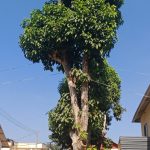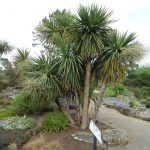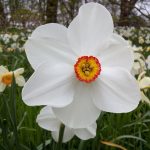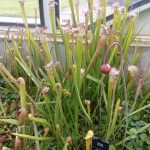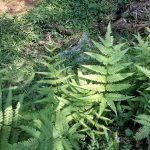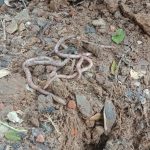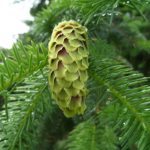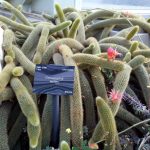Nitrogen is one of the elements that plays an important role in the functioning of living organisms. It is a component of proteins and Nucleic acids and without it living things cannot survive. Autotrophic living things like plants have to obtain the required nitrogen from the soil through the root system. Only if plants are able to grow well can all other organisms continue to exist on this earth as plants are the primary producers. Roots are able to absorb nitrogen only in the form of nitrates. Nitrogen is a gas with atomic number 7 and mass number 14. It has 5 electrons in the valence shell and is trivalent in nature. It is a major component of the air in the form of the N2 which is formed of three bonds between the two nitrogen atoms making up the Nitrogen molecule. Hence, Nitrogen in the molecular state is very stable and conversion into nitrate (NO3-) is not easy.
The atmosphere is the major source of Nitrogen for living organisms. It comprises 78% of the air in comparison to CO2 which is only 0.03%. Yet CO2 readily diffuses into green plants through the stomata but N2 cannot do so. Unlike CO2 elemental N2 diffuses out into the atmosphere before it gets converted to the combined form. The higher plants are thus unable to use the gaseous Nitrogen and must be given Nitrogen in the combined form so that they can synthesise their proteins. Therefore Nitrogen compounds absorbed from the soil are the sole source of N2 for all rotted plants.
The N2 content of the soil is enriched by microorganisms that bring about decay and decomposition of dead organic matter. They are also able to convert atmospheric N2 into combined form. This process is called Biological Nitrogen fixation and has been considered next in importance after photosynthesis. The higher green plants can utilise four kinds of compounds as sources of N2 – 1.Nitrates 2. Nitrites 3. Ammonium salts and 4. Organic nitrogenous compounds. The mechanism of absorption of the ionic forms of N2 is similar to the uptake of other ions. Most plants absorb their Nitrogen requirement in the form of nitrates.
Ammonia can be absorbed rapidly from the soil but a disadvantage of taking in NH3 directly is that it causes soil acidity. That is why when ammonium sulphate is added to the soil it require extra liming to counteract the acidity while Ammonium Nitrate is advantageous as it can absorb both acid and basic radicals. Ammonia in the soil is produced by the action of ammonifying bacteria like Bacillus ramosus. This ammonia is further oxidised to nitrite (NO2–) by Nitrococcus and to Nitrate by Nitrosomonas and Nitrobacter.
Within the plant body the absorbed nitrates are first reduced to Nitrite by the enzyme Nitrate reductase and then to NH3 by Nitrite reductase. NH3 is then used in the form of NH2- (amino group) to synthesise the various amino acids. These aminao acids take part in protein synthesis to form proteins. This is called assimilation of the absorbed nitrogen.
In this way Nitrogen is taken up and utilised by plants and when plants die and reach the soil their bodies are decomposed once again by microbes and Nitrogen returns to the soil. These sequence of events are collectively called as Nitrogen Metabolism


